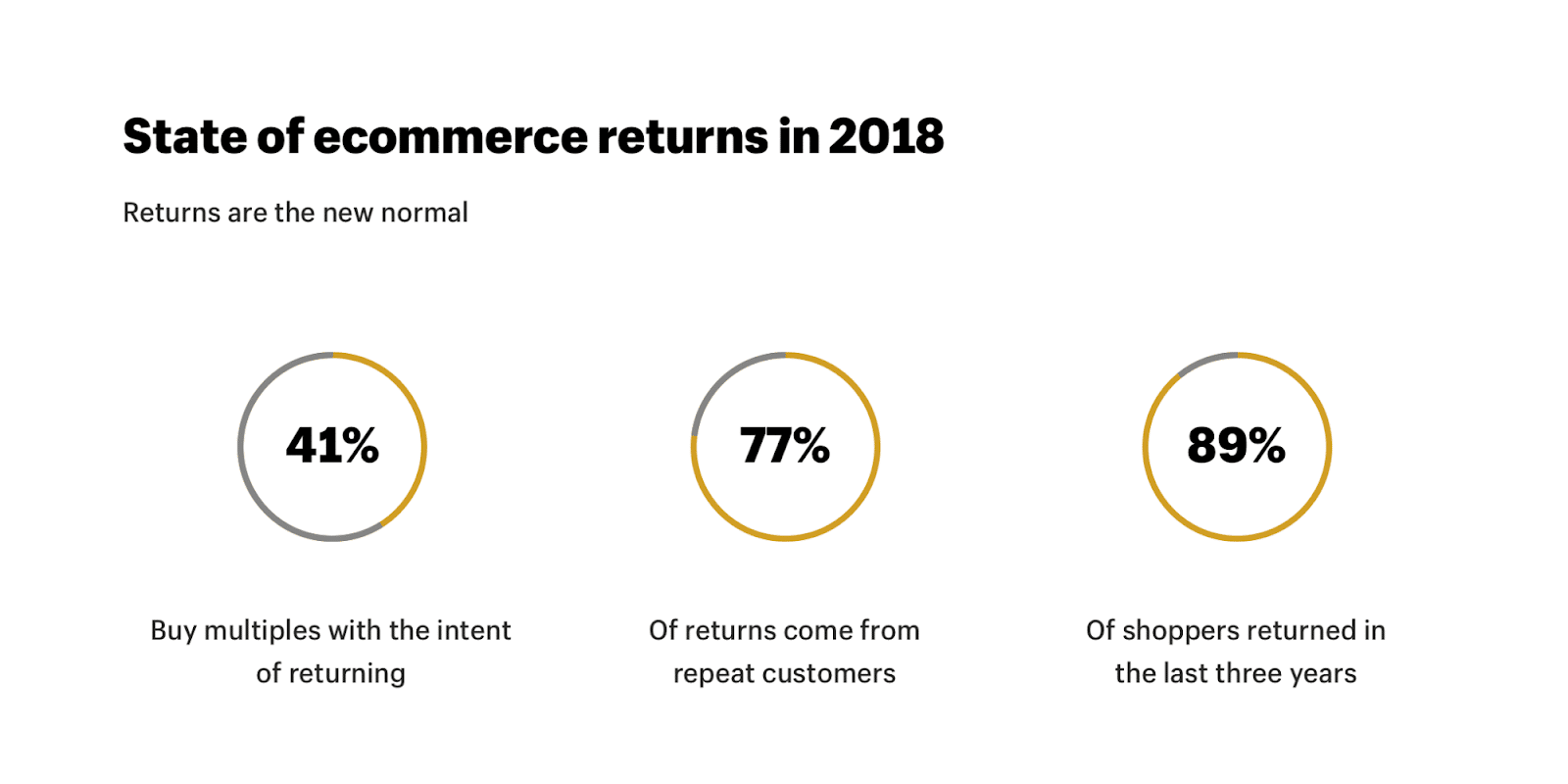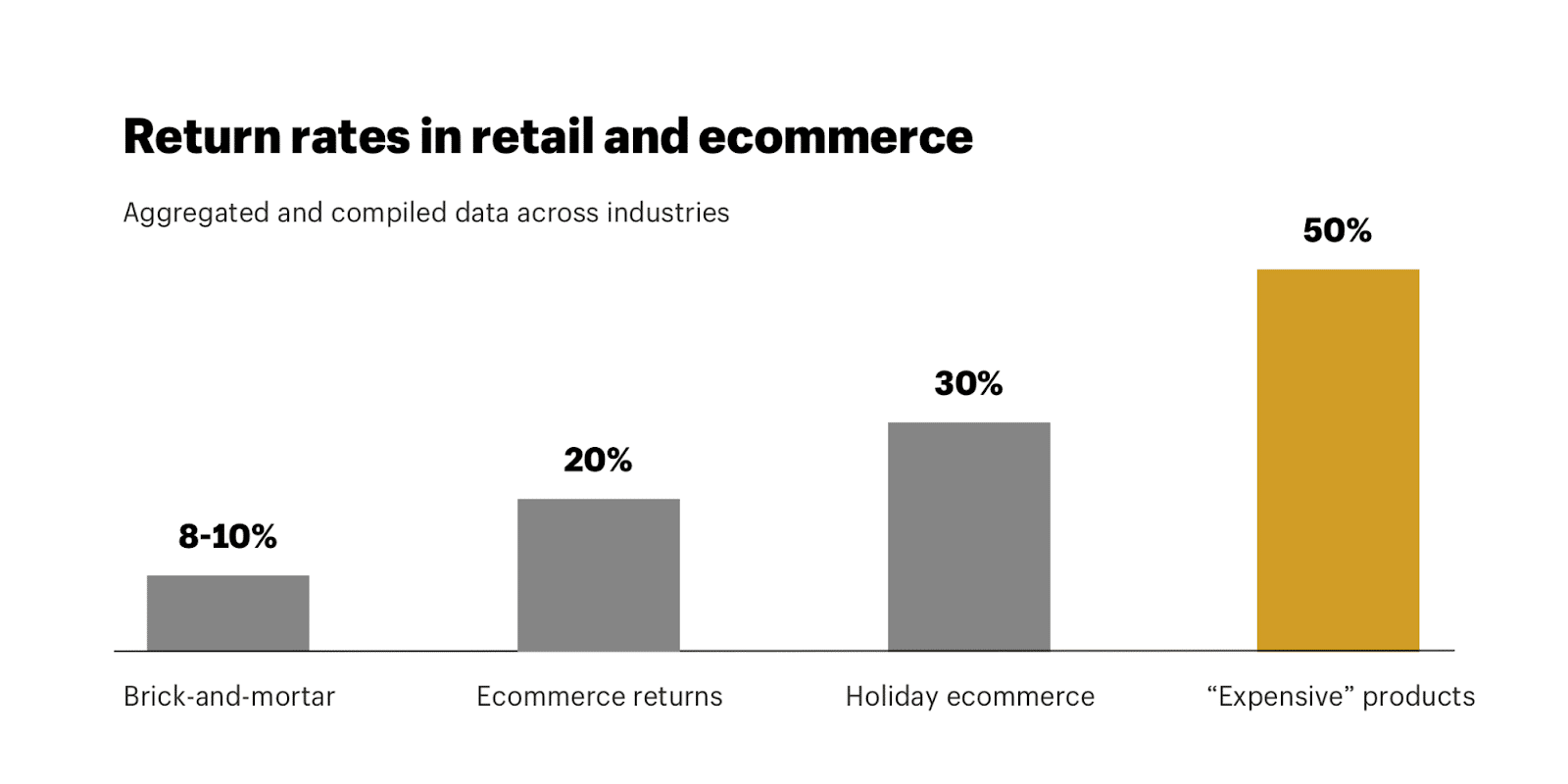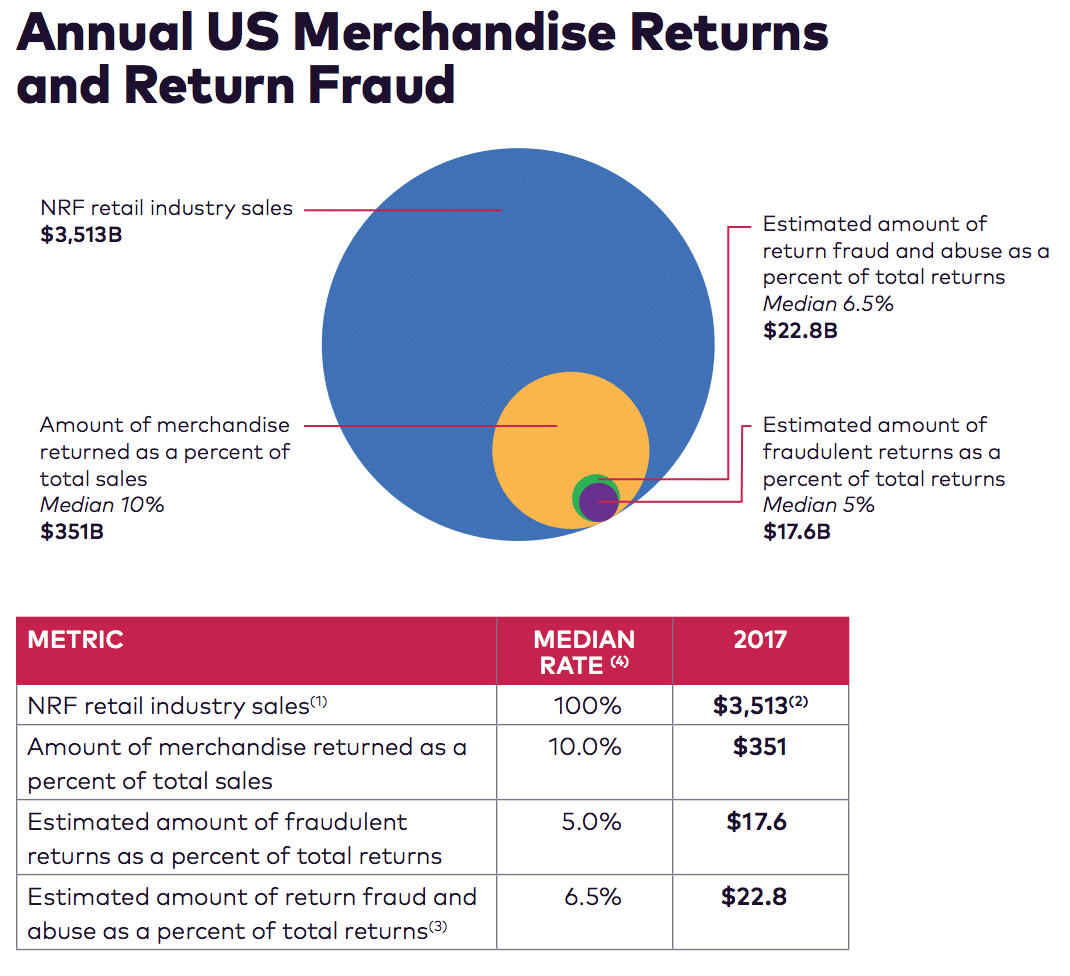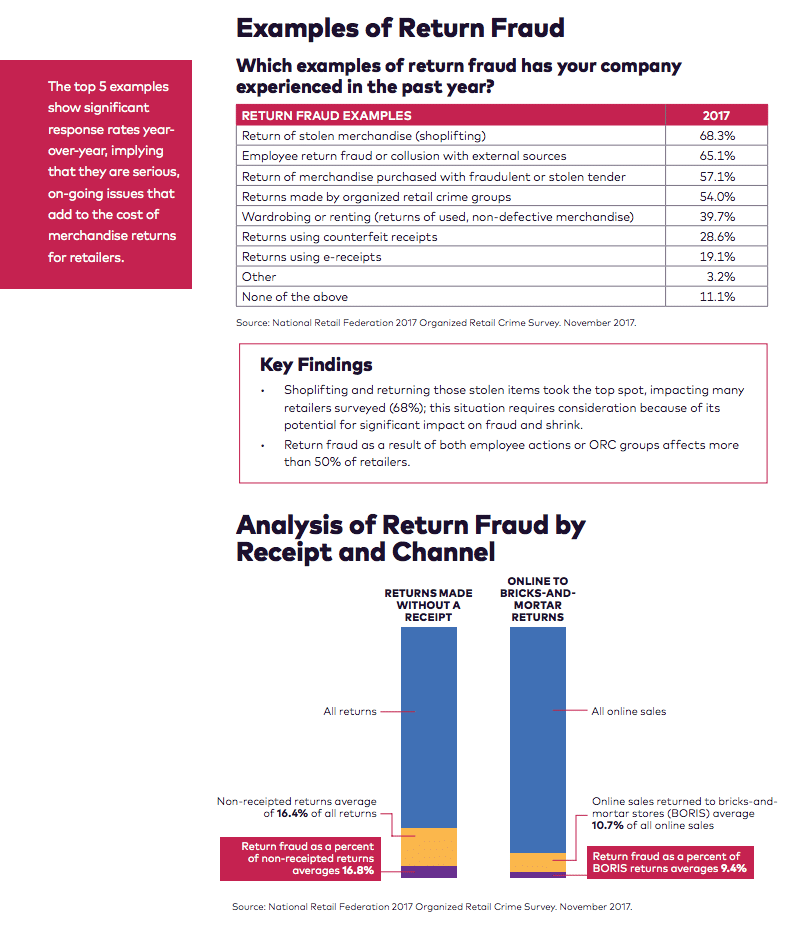If I didn’t know better, I’d believe that to run a successful online store all I need to do is find a product, set up a campaign, and watch the money roll in. But the most successful stores out there know that eCommerce profits can quickly be eroded by online returns.
That’s why we’ve compiled a list of the most effective strategies you can employ to increase your store’s revenue.
The Easiest Way to Increase Your Profit Today
The internet has made it incredibly easy for anyone out there to open up their own store.
All you need is a product and a few hours to set up an online presence before you can call yourself an online entrepreneur.
It’s also made it super easy for you to connect with customers across the globe.
Never before have customers been able to find so many brands in so many locations with such little effort.
Sounds great on the surface, right? But there’s also an inherent risk with such ease of access.
The increased options and access to various brands have changed user’s purchase behavior. In particular, it’s led to a huge number of people who shop with the idea of returning the product.
According to this Shopify report, online returns are the “new normal”.

As you can see, nearly 90% of shoppers surveyed have returned at least one product in the last three years.
More worryingly, 41% of those questioned had the idea to return the product as they were completing their purchase.
Returns are one of the major issues facing e-commerce stores. They massively outnumber those experienced in their brick-and-mortar counterparts and spike when it comes to the holiday season.

And they’re costing the industry a huge amount of money.
In the US alone the numbers for lost revenue are staggering.
Fraudulent online returns came in at $17.6 billion in 2017. Add to that return abuse, and the number jumps to $22.8 billion.

And that’s just looking at the cost of the product. When you examine the associated costs for processing returns including things like delivery, man-hours for processing, and additional wastage costs, that number skyrockets.
In the US, online return delivery costs are expected to hit $550 billion by 2020.
With each passing year, more and more people are returning products.
The cost of which is a slow moving disease. One which is destroying the profits and revenues of countless businesses.
And if you don’t do something to address your return rate, you could find yourself making a net loss on your sales rather than the profits you so desperately need.
Reducing online returns is one of the key actions you need to take to increase your profit margins.
Fortunately, there are a few ways to cut down on the legitimate returns and ensure that your users are getting the kind of service they require.
How to Reduce Legitimate Online Returns
There will always be people who try to game the system and take advantage of return policies.
You can try to combat these (and should try to), but you also have to make peace with the fact that there will always be customers with less than honorable intentions.
To start, focus on reducing the number of legitimate online returns you receive from your customers.
Let’s look at the top reasons customer return items, and how to combat them.
Helping them Find the Right Product
Sometimes shopping online can be a daunting and confusing experience.
Filtering a vast product inventory can become overwhelming for many, and it makes finding the right product for your needs something of an impossible task.
This is, in my opinion, one of the major reasons the e-commerce return rate is so much higher than the brick-and-mortar return rate.
Online, the user can’t physically handle the product and so aren’t confident it’s the right purchase.
Often, they also can’t ask for immediate advice from a knowledgeable product specialist.
The result is consumers making their best guess for the product that will solve their problem based on product descriptions and images. An action which has a high risk attached.
So what’s the solution?
Well, there’s a couple of potential options;
- Ensure the product descriptions are as detailed and useful as possible
- Try to incorporate video along with your product images to give a better understanding of the product
- If possible, look at the potential of using AR to add an even more realistic browsing experience

However, one of the best actions you can take is to implement some form of immediate communication channel to guide your shoppers to the best choice.
On-site live chat can be a great way to quickly answer questions and help your users find the perfect product for their needs.
Between these four actions, you’ll have a better chance of ensuring your customers are well educated on what product is going to offer them the greatest benefit.
Extending Support Beyond the Sale
So helping people find the right product is great for securing the sale.
It can also help reduce online returns as it’s exactly what your customer needs.
However, you want to ensure they know how to use the product effectively.
If you can ensure that the consumer gets the highest level of value out of the product the chance of them returning it will drop drastically.
Problem is, a lot of the information out there on following up after the sale is focused on asking for a review or pushing a product.
What you should be focusing on is increasing the value the customer gets from the product.
For example, let’s imagine a customer has just bought a DSLR camera from you and, thanks to your segmentation, you know this is the first DSLR they’ve ever bought.
In your receipt and fulfillment emails you could push the idea of a free course to help them get to grips with the product.
That course could take the form of an email, online videos, or even a single handbook and could cover points including:
- Basic camera storage instructions
- How to take your first photo on automatic settings
- Basics of manual settings
- How to optimize lighting etc
The idea is to keep the user engaged with the product and to show them it’s full range of applications.
Do this, and the perceived value increases which reduces the chance they’ll return it.
Preventing Damaged Goods
A couple of years ago I bought a pair of trousers online.
They arrived in a plastic bag which had obviously been caught in the delivery truck’s door. There was a huge gash in the bag and trousers making them unusable.
I immediately emailed the company who asked me to return them so they could send me a new pair.
It was a painless, albeit annoying experience for me.
There’s no way to fully control the potential damage to your products. You’re always going to have to trust an external provider to some extent.
However, you can continually minimize the risk by taking these actions;
- Keep a log of support requests that mention delivery. This will give you the information you need to forward to your delivery provider
- Ensure your products are wrapped and packaged in a way that reduces the chance of them being damaged in transit.

There’s always going to be a learning curve here, but by keeping an eye on your progress through your support system you should be able to continually improve the standard of delivery.
Wardrobing
Wardrobing is the process of being something, using it once, then returning it for a full refund.
Think someone buying a new top or dress for a single night out, then returning it a day later. They look great at the bar, and haven’t really had to spend anything on looking good.
This is a really difficult process to eradicate, but you can slow the practice down with a few minor changes.
The first is to always demand a receipt. It sounds like common sense, but 68% of return fraud is the return of stolen items which, as you’d imagine, would have no receipt.

People can’t steal from an e-commerce store, but asking for a receipt adds to the process and should reduce the risk of those who are doing it without a real reason.
Restocking fees can be a great way to reduce the chance of wardrobing.
Basically, a restocking fee is a one time fee you charge people to make the return.
Restocking fees often run around 15%-25%. However, they’re not really useful unless you’re selling higher-end goods.
We’d recommend focusing on things like big screen TVs around big sports events for this to stop people buying a 60” TV to watch the game on before returning it.
One of the final things you can do is amend the online returns policy. But that requires a section unto itself.
Your Online Returns Policy Puts People Off
There’s a lot of advice out there which says to relax our returns policy and make it easier for people to return goods.
It’s good advice based on solid studies. The below study found net sales dropped over 8% over a six month period when implementing a stricter return policy.

In testing this, Zappos discovered that offering a very generous return policy increased overall sales.
They offer customers 365 days for returns and pay for the shipping.

The belief is that the more lenient policy encourages conversions and so increases sales because of the minimized risk.
However, it’s also an attractive sentiment for wardrobers.
Zappos experience a 50% return rate thanks to this policy. 20% higher than the average. However, they’re not at all worried.
Craig Adkins, Zappos VP of operations says, “Our best customers have the highest returns rates, but they are also the ones that spend the most money with us and are our most profitable customers.”
They basically eat the cost because of the higher profit margins.
This might be enough to make you loosen your returns policy, however, I wouldn’t recommend it unless your return process is incredibly optimized.
Zappos can get away with such a generous policy because their distribution centers know exactly what to do with returns and how to deal with them.
Most brands can’t boast that level of knowledge and so will waste more money.
What you should be doing is taking baby steps. Your returns policy isn’t a permanent contract, but one that should be forever changing.
Look at what you can ease up on now and go from there.
Start to relax the rules, but not to the extent you’re putting yourself at risk.
Online Returns Will Destroy Your Margins Unless You’re Proactive
You’ve got to go on the offensive with this.
Returns can become a massive hole in your profits and close the margins you’re working with.
To start, revise your policy. A huge number of people will check it out before they purchase. Consider loosening the rules for a return, but at the same time, ensure there are thorough checks on the legitimacy of the return.
You want to reduce the number of wardrobers but encourage those who genuinely need a return to complete their purchase.
Beyond the policy, you have to focus on the customer.
Look at how you can best help guide them through the purchase journey. Online, the most effective method of guiding users to the right product is through a live chat solution that mimics an in-store assistant like eDesk.
Beyond the on-site experience, you want to set up a follow-up campaign that helps them get the most from the product.
If you can change your policy to dissuade fraudulent returns and help customers make the right decision and feel comfortable with the product, you should see online returns decline.
eDesk the next-generation helpdesk, built for eCommerce from the ground up. It helps you simplify and scale your customer support, saving you time, money and headaches!




